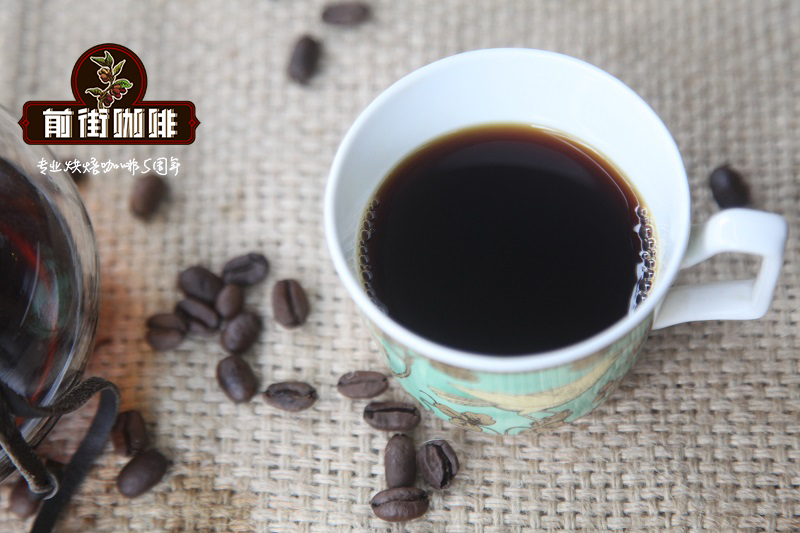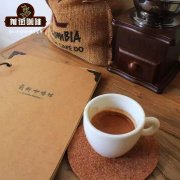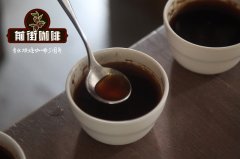The difference among bidding, Gold bid, Red bid, Green Standard and Chaka batch of Rose Summer in Ruoxia Village

Professional coffee knowledge exchange more coffee bean information please follow the coffee workshop (Wechat official account cafe_style)
In 2011, Adam followed his consultant Willem Boot on an expedition in the forest around the manor, where he discovered a variety of wild tree species in a jungle magically surrounded by dense forests, of which the most surprising was the wild rose summer. Later, they learned that this was the Gori Gesha forest, where the rose summer coffee variety was first found.
They collected seeds from native rose summer trees, and after careful screening, they sent the seeds to professional institutions for genetic testing to determine that they belonged to the original collection site of Panamanian rose summer varieties; then, through the study of the plant shape of coffee trees, the appearance and size of coffee beans, and the cup test results, they selected the roses that are closest to the current Panamanian rose summer, and began to raise seedlings.
-Coffee varieties now grown in Rosa Village
Because of its name, the coffee farm in Rosa Village often makes people misunderstand that only Rosa Coffee is grown in Rose Village. In fact, in addition to two varieties, there are also native species named Illubabor.
Fine management:
Internal grading of Ruoxia Village
Flavor and product
Even in the top estates, there are differences in the quality of the coffee produced. In order to live up to the "flavor reputation" of Ruoxia Village, a strict grading system has been implemented within the village.
Competitive bidding batch
Accounting for only 3.7% of the annual output of Rose Xia Village, the top batch of the carefully selected manor can only be obtained through the global bidding of 2018 Rose Xia Village Coffee Manor. The cup test score of the 2018 bidding batch is 88.15-92.67 points, which is divided into champion selection (Champion's Reserve) and manor selection (Farm Reserve).
Gold standard batch
It accounts for only 5% of the annual output of Ruoxia Village. The batches usually selected by competitors from all over the world, bakers with high quality requirements will also be purchased, with complete traceability, outstanding flavor and high complexity of each batch. It is the best grade of the manor second only to competitive bidding.
Red label batches
The batch with complete traceability has the typical flavor of Rosa Village, and the flavor intensity and complexity are slightly weaker than the gold standard batch. It is a single product batch with very high performance-to-price ratio.
Green label batches
A batch from a single plot and a single variety, with a typical flavor of Rosa Village, with a slightly weaker flavor intensity and complexity than the red label batch.
Chaka batches
The blend of Rosa Coffee produced in Ruoxia Village includes three varieties, namely, Gori Gesha, Gesha 1931 (Gesha 1931) and Illubabor (Ethiopian primary disease resistant variety).
Multiple strict selection of bidding lots in Rose Summer Village in 2018
Cup test / announcement
Since the bidding in Ruoxia Village began in 2017, due to the phenomenon of competitive and non-competitive bidding batches with the same batch number on the market, Ruoxia Village has made great efforts to reform this year. 2018 of the bidding batches are all independent batches. The selection of bidding batches took nearly 3 months, and 31 bidding batches were finally finalized after several rounds of repeated cup testing.
Multiple rounds of strict selection of bidding batches
The first round of screening began at the end of January, when the landowners Adam and Rachel, together with their quality control team and Willem Boot consulting team as far away as the United States, began cup testing in Ethiopia and rest for more than 6 weeks. in the cup test, in order to prevent different cup test results due to different ordering, each batch of beans must go through at least two rounds of cup tests in different order to ensure accurate results.
The owner of Ruoxia Village and the bidding batch of Willem Boot Cup Test
After the first round of cup testing, the two sides will compare the data, about 60-70% of the batches agree, and the remaining batches that do not agree need to be further tested; in April 2018, the manor team and its consulting team gathered at the office of Rosa Village in the Ethiopian capital for a second round of cup test selection. The focus of this round is to test the changes in the initial bidding batches and to re-compare and discuss the previously disputed batches.
It is worth mentioning that Gori Gesha, from the Shewa-jibabu plot, performed well this year. In the bidding lots, the winner and the manor selected champion came from the sunny Gori Rosa coffee on the site.
-GRAND CRU is in the testing office of Ruoxia Village Cup.
Bidding lots of Rose Summer Village in 2018
Add the size index of the number of eyes
In the end, the owner and the team finally selected the best 31 batches from 117 batches, but in order to further improve the flavor of the 31 batches, the team conducted a new series of tests. By comparing different numbers of eyes, they found that beans with larger eyes performed better in cup tests. As a result, they decided that in the bidding batch, the mesh number of Rosa 1931 was 17 or more, and that of Gori Rosa and Illubabor was 16 and more. But because Ethiopia's existing mesh screening equipment can only screen beans with 14 or more mesh, landowner Adam also bought back dozens of coffee laboratories from the United States, and hired a large number of workers to manually screen the beans in the bidding batches.
-manual screening of coffee beans
After round after round of cup tests, the bidding batches of Rose Village in 2018 were finally determined, which were divided into champion selection (7 batches, each batch only 90kg) and manor selection (24 batches, each batch only 120kg) a total of 31 batches, including 26 sun batches, 4 washing batches and 1 honey treatment batch.
-different proportion of parcels in bidding batches
In the bidding batch, the proportion of three coffee varieties in Rosa Village is 69.1% for Rosa 1931, 27.5% for Gori and 3.4% for Illubabor.
The annual bidding batch of Ruoxia Village finally stands out after repeated cup tests, which is why it ended up with a high price in its first independent bid last year and attracted the attention of the industry.
Not long ago, GRAND CRU joined hands with Rosa Village to hold a national flavor tour of Rose Xia Village bidding batches and collection batches, all of which were unveiled and captured the taste buds of many friends.
END
Important Notice :
前街咖啡 FrontStreet Coffee has moved to new addredd:
FrontStreet Coffee Address: 315,Donghua East Road,GuangZhou
Tel:020 38364473
- Prev

Ninety Plus90+ Perci prospects Rose Summer Coffee Bean Story 90 + Rose Summer Manor Flavor Taste
Professional coffee knowledge exchange more coffee bean information please follow Coffee Workshop (Wechat cafe_style) Ninety Plus 90 + Perci N2 Prospect (Sun exposure) Rose Summer Coffee Bean (Geisha) Percy Perci derives from Insight Perspective, which describes the ability to observe all sensory stimuli during coffee evaluation. Perci has a very complex
- Next

Panama BOP upstart-Dona Elvira Elvira Manor Rose Summer Coffee Bean Story introduction
Professional coffee knowledge exchange more coffee bean information please follow the coffee workshop (Wechat official account cafe_style) in Panama BOP (BEST OF PANAMA) event, in addition to Esmerald (Elida), Janson (Janson) and other old faces, there is a new player Elvira Manor Rose Summer Coffee Dona Elvira to join
Related
- Detailed explanation of Jadeite planting Land in Panamanian Jadeite Manor introduction to the grading system of Jadeite competitive bidding, Red bid, Green bid and Rose Summer
- Story of Coffee planting in Brenka region of Costa Rica Stonehenge Manor anaerobic heavy honey treatment of flavor mouth
- What's on the barrel of Blue Mountain Coffee beans?
- Can American coffee also pull flowers? How to use hot American style to pull out a good-looking pattern?
- Can you make a cold extract with coffee beans? What is the right proportion for cold-extracted coffee formula?
- Indonesian PWN Gold Mandrine Coffee Origin Features Flavor How to Chong? Mandolin coffee is American.
- A brief introduction to the flavor characteristics of Brazilian yellow bourbon coffee beans
- What is the effect of different water quality on the flavor of cold-extracted coffee? What kind of water is best for brewing coffee?
- Why do you think of Rose Summer whenever you mention Panamanian coffee?
- Introduction to the characteristics of authentic blue mountain coffee bean producing areas? What is the CIB Coffee Authority in Jamaica?

